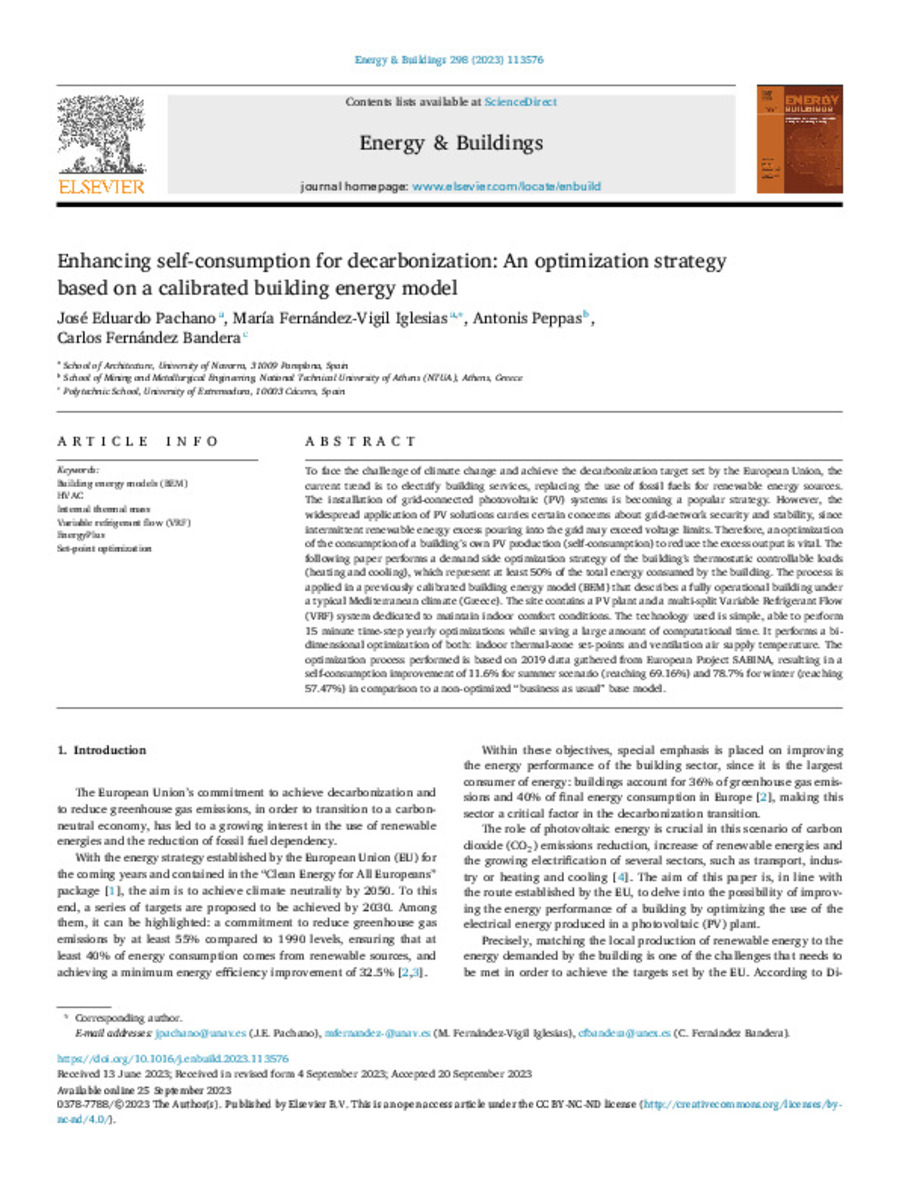Enhancing self-consumption for decarbonization: An optimization strategy based on a calibrated building energy model
Palabras clave :
Building energy models (BEM)
HVAC
Internal thermal mass
Variable refrigerant flow (VRF)
EnergyPlus
Set-point optimization
Fecha de publicación :
2023
Nota editorial :
© 2023 The Author(s). Published by Elsevier B.V. This is an open access article under the CC BY-NC-ND license
Cita:
Fernández-Vigil, M. (María); Pachano, J. E. (José Eduardo); Fernández-Bandera, C. (Carlos); et al. "Enhancing self-consumption for decarbonization: An optimization strategy based on a calibrated building energy model". Energy and Buildings. 298, 2023, 1 - 16
Aparece en las colecciones:
Estadísticas e impacto
0 citas en

0 citas en

Los ítems de Dadun están protegidos por copyright, con todos los derechos reservados, a menos que se indique lo contrario.








